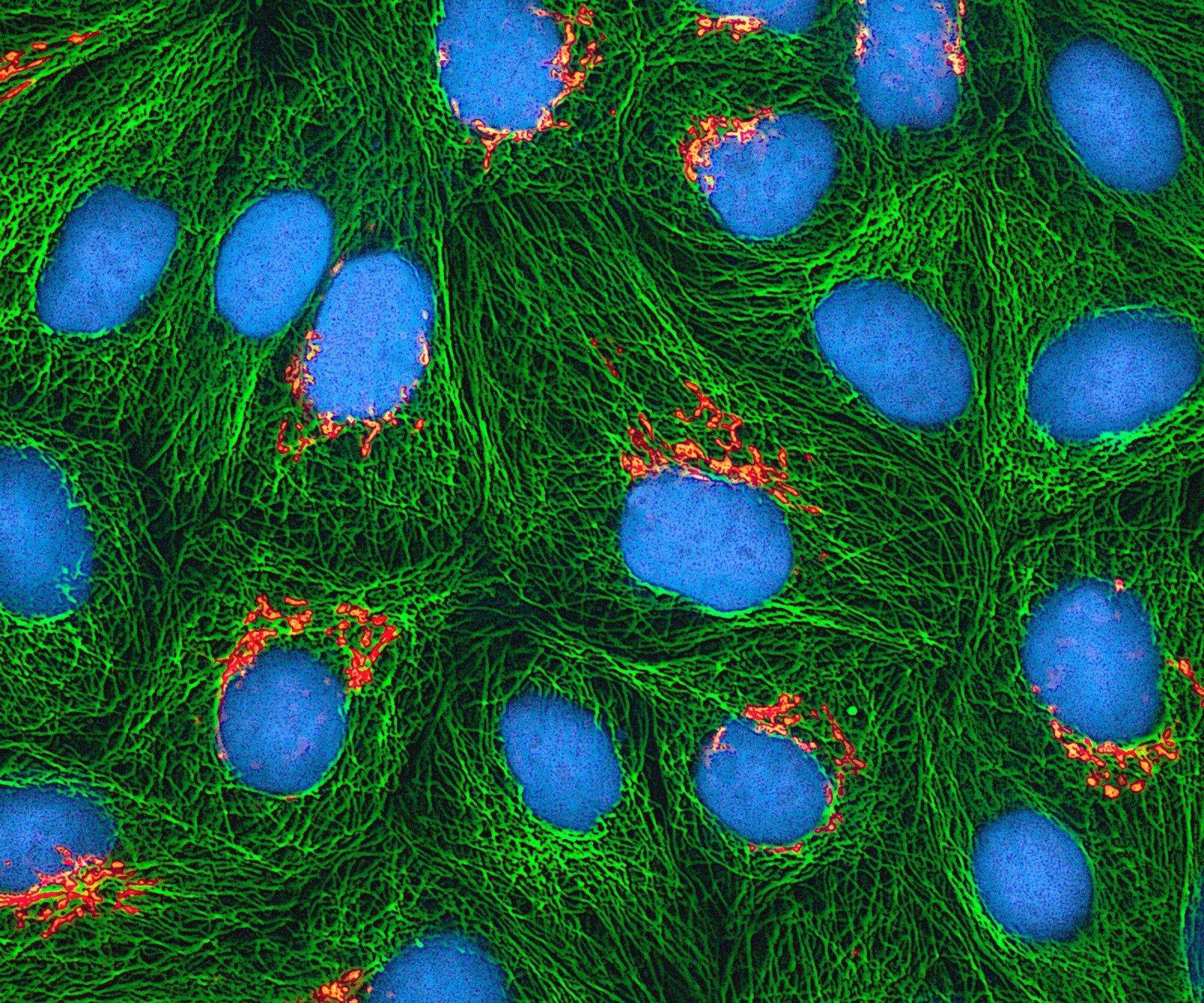Mysterious Blood Diseases: Unraveling Myeloproliferative Neoplasms
Myeloproliferative neoplasms (MPNs) are a group of complex blood diseases that often baffle medical professionals due to their intricacy. Originating in the bone marrow, these conditions lead to an overproduction of blood cells, causing numerous health issues. This article aims to demystify MPNs, by examining their types, causes, symptoms, and the latest treatment advancements, guided by evidence-based data and insights from specialists in the field.

Key Takeaways
- Myeloproliferative neoplasms are rare blood diseases involving abnormal growth and development of cells in the bone marrow and blood.
- Symptoms often mimic those of more common conditions, leading to misdiagnosis or delayed diagnosis.
- Advancements in medical technology and research have led to novel treatment approaches.
- Continued research is essential to enhance our understanding and develop innovative treatment strategies.
Understanding Myeloproliferative Neoplasms
Myeloproliferative neoplasms, a group of rare blood diseases, involve the abnormal growth and development of cells in the bone marrow and blood. These disorders pose unique diagnostic challenges due to their rarity and complexity. The symptoms often mimic those of more common conditions, leading to misdiagnosis or delayed diagnosis. However, advancements in medical technology and research have led to novel treatment approaches. These methods not only aim to control the proliferation of abnormal cells but also to target the root cause of the disease. Despite these advances, there remains a critical need for more effective and less toxic therapies. Therefore, continued research is essential to enhance our understanding of myeloproliferative neoplasms and to develop innovative treatment strategies.
Symptoms and Signs of Myeloproliferative Neoplasms
Often, individuals with myeloproliferative neoplasms may experience a wide array of nonspecific symptoms, making these conditions particularly challenging to diagnose. Symptoms can range from fatigue, weakness, and unexplained weight loss to more specific signs such as an enlarged spleen or liver. As disease progression occurs, symptoms may intensify and new ones can emerge. Early diagnosis is crucial in managing these neoplasms and mitigating their negative impact on the patient's quality of life. The treatment options, which vary depending on the specific type of myeloproliferative neoplasm and the patient's overall health, can alleviate symptoms and slow disease progression. These can include targeted therapies, chemotherapy, and in some severe cases, stem cell transplants. Regular monitoring is essential to assess the effectiveness of the treatment and adjust as needed.
Diagnostic Procedures for Myeloproliferative Neoplasms
In the realm of hematology, diagnosing myeloproliferative neoplasms involves a series of intricate medical procedures, encompassing physical examinations, laboratory tests, and sometimes, bone marrow biopsies. A differential diagnosis is necessary to distinguish these disorders from other hematological diseases. This process may entail various blood tests to evaluate the number and appearance of blood cells, and to detect abnormal chromosomes. In some instances, a bone marrow biopsy provides definitive evidence of the disease. This approach enables the identification of the specific type of myeloproliferative neoplasm, which is crucial for exploring the appropriate treatment options. These options can range from watchful waiting for slow-progressing forms to more aggressive treatments like chemotherapy, targeted therapy, or stem cell transplantation for advanced stages.
Common Types of Myeloproliferative Neoplasms
Several types of myeloproliferative neoplasms exist, each with its own unique set of characteristics and clinical manifestations. Common types include Polycythemia Vera, characterized by an overproduction of red blood cells; Essential Thrombocythemia, which results in too many platelet cells; and Myelofibrosis, involving abnormal bone marrow fibrosis. The risk factors for developing these diseases are not fully understood; however, genetic mutations and age are believed to play a significant role. Treatment options can vary, focusing on reducing symptoms, preventing complications, or slowing the progression of the disease. This may involve medication, blood transfusions, or in severe cases, bone marrow transplants. With further research, our understanding of these complex diseases and their optimal treatment strategies continue to evolve.
Potential Causes of Myeloproliferative Neoplasms
While the exact causes of myeloproliferative neoplasms remain elusive, a multitude of factors, including certain genetic mutations and environmental triggers, are believed to potentially contribute to the development of these complex blood disorders. Potential risk factors for these diseases may include a family history of similar conditions, exposure to toxic chemicals, and certain viral infections. Research into the molecular underpinnings of myeloproliferative neoplasms has revealed that mutations in genes such as JAK2, MPL, and CALR are often implicated in these disorders. These discoveries have paved the way for emerging treatments that target these mutations, offering hope for improved outcomes. However, further research is needed to fully understand the complex interplay of genetic and environmental factors in the development of these diseases.
Risk Factors and Prevention Strategies
Understanding the risk factors for myeloproliferative neoplasms is crucial, and so is identifying potential prevention strategies to curb the incidence of these complex blood disorders. Prevalence rates of these neoplasms are increasing, and a deeper comprehension of risk factors is necessary to reverse this trend. These include age, as the likelihood rises significantly for individuals over 60, and gender, with men being more susceptible. Genetic mutations also play a significant role. Prevention strategies are still in development due to the complex nature of these diseases, but general healthy lifestyle choices, such as regular exercise and a balanced diet, are recommended. Additionally, early detection through regular health checks can significantly improve outcomes. Therefore, understanding and addressing risk factors are pivotal elements in managing myeloproliferative neoplasms.
Treatment Options for Myeloproliferative Neoplasms
In the realm of modern medicine, a myriad of treatment options, including medications, surgical procedures, and bone marrow transplantation, are available for managing myeloproliferative neoplasms effectively. The choice of treatment largely depends on the type of neoplasm, patient's age, overall health, and the presence of any additional health conditions. In addition to traditional treatments, alternative therapies can play a supportive role, potentially alleviating symptoms and improving quality of life. These may encompass practices like acupuncture, massage, and mindfulness techniques. Furthermore, patients can opt to participate in clinical trials. These trials aim to test new or modified treatments, offering a chance to benefit from cutting-edge therapeutic options. It is vital to discuss the potential benefits and risks of these options with a healthcare professional before deciding on a treatment strategy.
Living With Myeloproliferative Neoplasms
Anyone diagnosed with myeloproliferative neoplasms faces a unique set of challenges, and managing these effectively can significantly enhance their quality of life. Managing symptoms is paramount and involves regular medical check-ups, medication, and lifestyle modifications. The unpredictable nature of the disease can be stressful, making emotional and psychological support essential. Support networks, including friends, family, and healthcare professionals, play a crucial role in this regard. Joining a patient support group can also provide valuable insights from individuals dealing with the same condition. Furthermore, maintaining a balanced diet, regular exercise, and proper rest can help manage fatigue and other physical symptoms. Living with myeloproliferative neoplasms can be daunting, but with appropriate management strategies and support, patients can lead fulfilling lives.
Coping Strategies for Patients and Caregivers
Navigating the complexities of myeloproliferative neoplasms requires effective coping strategies for both patients and caregivers to manage the physical, emotional, and psychological impacts of the disease. Managing stress is crucial; regular exercise, a balanced diet, and sufficient sleep can enhance the body's resistance to stress. Engaging in calming activities such as meditation and deep breathing exercises can also help. Moreover, joining support groups can offer a sense of community and shared understanding, providing a platform to exchange experiences, learn from others in similar situations, and gain emotional support. Additionally, professional counseling can be beneficial for those feeling overwhelmed. For caregivers, it's important to remember self-care and seek respite care when needed to prevent burnout.
Research Developments in Myeloproliferative Neoplasms
Over the past two decades, significant advancements have been made in the research of myeloproliferative neoplasms, broadening our understanding and opening new avenues for treatment strategies. These myeloproliferative neoplasms research advancements have played a crucial role in identifying key genetic mutations that drive disease progression, leading to the development of targeted therapies. The emergence of JAK inhibitors, for example, has transformed the treatment landscape for these disorders. Furthermore, ongoing clinical trials are testing the efficacy of various emerging therapies for myeloproliferative neoplasms, including immunotherapies and epigenetic modifiers. As more insights are gained, there is growing optimism that these research developments will continue to improve the prognosis and quality of life for patients with these complex blood disorders.
Case Studies on Myeloproliferative Neoplasms
In this section, we will delve into compelling case studies on myeloproliferative neoplasms, and explore the varied presentations and progression of these complex blood disorders. The case studies presented herein offer a unique perspective on the patient journey, starting from the initial symptoms and diagnosis through to treatment and follow-up. These studies highlight the heterogeneity of these disorders, the unpredictability of their course, and the challenges they pose for clinicians. Additionally, the case studies underscore the crucial role of clinical trials in advancing our understanding of these neoplasms. Clinical trials often provide the first evidence of a new treatment's efficacy, setting the foundation for future research and potentially altering the course of this disease.
Personal Stories and Experiences
Patients' lived experiences with myeloproliferative neoplasms, and the resilience they demonstrate in managing their symptoms, offer a poignant insight into this complex disease. These personal narratives highlight the strength of human spirit and the power of perseverance, as individuals navigate through the intricacies of this medical condition. Support groups play a crucial role, providing a platform for sharing stories, exchanging advice, and offering emotional backing. The sense of community and shared understanding these groups foster is often a lifeline for many. Additionally, some patients find solace and symptom relief in alternative therapies, such as acupuncture, yoga, and mindfulness practices. These therapies, while not replacing conventional treatments, can offer additional tools in managing the disease and improving quality of life.
Resources for Further Information and Support
For those grappling with the challenges of myeloproliferative neoplasms, a wealth of resources for further information and support is at their disposal. A critical avenue of support is patient-focused support groups. These communities offer a safe space for people to share their experiences, gain insights from others with the same condition, and find emotional support. They can be found both locally and online. Additionally, the National Cancer Institute and other health organizations offer comprehensive and up-to-date information about the disease. They also provide details on ongoing clinical trials, which can provide access to new treatments. Clinical trials are an important resource for patients seeking advanced therapies and contribute to the broader understanding and treatment of these complex diseases.
Frequently Asked Questions
What Is the Average Life Expectancy for Someone With a Myeloproliferative Neoplasm?
The average life expectancy for someone with a myeloproliferative neoplasm can vary significantly depending on several prognostic factors such as age, overall health, and specific type of neoplasm. However, due to advancements in treatment methods, including targeted therapy and stem cell transplantation, the survival rates have significantly improved over the years. It's essential for patients to have detailed discussions with their healthcare providers to understand their specific prognosis and treatment options.
Are There Any Potential Complications Associated With Myeloproliferative Neoplasms During Pregnancy?
Myeloproliferative neoplasms can present potential complications during pregnancy. Neoplasm management is crucial to mitigate risks such as blood clots, excessive bleeding, and potential impact on fetal development. Regular monitoring and tailored treatment plans are essential to balance the mother's health needs with those of the fetus. It is important to consult with a hematologist and obstetrician specializing in high-risk pregnancies for the most optimal pregnancy outcomes.
Is There a Genetic Predisposition to Developing Myeloproliferative Neoplasms?
Yes, there is a genetic predisposition to developing myeloproliferative neoplasms. Certain mutations in genes such as JAK2, MPL, and CALR have been associated with these disorders. However, having these mutations does not guarantee the development of a neoplasm. Neoplasm prevention primarily focuses on managing risk factors. Neoplasm symptoms may include fatigue, weakness, and weight loss, emphasizing the need for regular check-ups for early detection and management.
Can Myeloproliferative Neoplasms Recur After Treatment?
Myeloproliferative neoplasms (MPNs), despite efficient treatment, can recur. The efficacy of the treatment varies among patients and is influenced by several factors including the type of MPN, age, and overall health status. Recurrence prevention is a major focus in the management of MPNs, which involves regular monitoring and tailored treatment strategies. Ongoing research aims to improve understanding of these diseases and develop more effective treatments to prevent recurrence.
How Does Having a Myeloproliferative Neoplasm Affect the Body’s Immune System?
Myeloproliferative neoplasms (MPNs) can significantly impact the body's immune system, often resulting in an immunocompromised state. This leads to an increased susceptibility to infections. Neoplasm treatment options are designed to manage the overproduction of blood cells, while also addressing the compromised immune system. Neoplasm symptom management includes measures to boost immunity, prevent infections, and manage associated symptoms, thereby enhancing the quality of life for individuals with MPNs.
Conclusion
In conclusion, myeloproliferative neoplasms are complex blood diseases with varied causes, symptoms, and treatment options. Current research and case studies are advancing the understanding and management of these conditions. Personal narratives provide valuable insights into lived experiences, while resources offer necessary support. Increased understanding and knowledge dissemination can empower patients and healthcare providers in effectively managing these challenging diseases.

This post has been generated by AI and was not reviewed by editors. This is Not legal advice. Please consult with an attorney.




